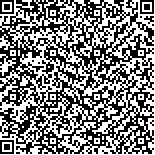| 摘要: |
| 为缩短传统体外培养派琴虫的生长周期(20 d),以北海派琴虫(Perkinsus beihaiensis)为培养对象,探讨了温度、盐度、震荡条件这3种物理因素单独或协同变化下对北海派琴虫的生活史和培养速率的影响。结果显示,在北海派琴虫经过休眠孢子阶段之后,出现一个前游动孢子囊阶段,该阶段以出芽增殖的方式繁殖,繁殖速度十分迅速,但细胞体积较小。体外培养过程中,单一的温度、盐度条件变化对北海派琴虫的培养速率无显著影响,当只添加震荡条件时,北海派琴虫12 d即完成增殖,扩增时间明显缩短、培养速率明显提高。当多个培养条件协同变化下,即温度由35℃降至28℃、盐度35降至25时,北海派琴虫8 d即能完成一个增殖循环,与传统培养方法所需的20 d培养周期相比,大大缩减了培养时间,提高了培养速率。 |
| 关键词: 北海派琴虫(Perkinsus beihaiensis) 前游动孢子囊 盐度 温度 震荡 协同变化 |
| DOI:10.11759/hykx20210722001 |
| 分类号:S944 |
| 基金项目:国家现代农业产业技术体系建设专项资金(CARS-49);惠州学院教授、博士启动项目(2020JB065) |
|
| Effect of physical factors on optimizing in vitro culture of Perkinsus beihaiensis |
|
WANG Zhao-rui1, YANG Xiao-tong2,3,4, SUN Jing-feng4, WANG Jiang-yong1
|
|
1.Huizhou University, Huizhou 516007, China;2.Key Lab of Fishery Ecology and Environment, Key Lab of South China Sea Fishery Resources Exploitation &3.Utilization, Ministry of Agriculture, Guangzhou 510300, China;4.Tianjin Agricultural University, Tianjin 300384, China
|
| Abstract: |
| Perkinsosis, caused by Perkinsus spp., is widespread and responsible for the mass mortality of various kinds of shellfish. Perkinsus beihaiensis was first described in China and has been subsequently reported in 14 bivalve species from Brazil, India, Panama, and Japan. In this study, we established a monoclonal in vitro culture of Perkinsus beihaiensis isolated from Ruditapes philippinarum and compared the morphological features of various life stages by light microscopy. To shorten the conventional in vitro growth period (20 days), we explored the effects of temperature, salinity, and a shock condition on the development of P. beihaiensis either alone or together. The P. beihaiensis cells successfully developed into the hypnospore stage in the ARFTM medium. When transferred to a DME/F-12 medium, the cells experienced a specific pre-zoosporangium stage followed by the zoospore trophozoite stage. At this pre-zoosporangium stage, the cells reproduced rapidly by budding to release many small sporozoites. In vitro culture experiments showed that periodically changing the temperature or salinity alone had no significant effect on the rate of P. beihaiensis propagation; however, a continuous shaking culture reduced the generation time from 20 days in the control group to 12 days in the treated group. Further studies showed that when multiple culture conditions were changed together, i.e., the temperature was decreased from 35℃ to 28℃ and salinity was simultaneously decreased from 35 to 25 ppt in 2 days, P. beihaiensis completed its life cycle in 8 days. These results provide insight into the conditions required for developing this parasite and a better understanding of the infection dynamics of this parasite in nature. Changing the temperature or salinity alone had no significant effect on the rate of propagation of P. beihaiensis, while the continuous shaking culture can reduce the generation cycle time from 20 days in the control group to 12 days. Further studies found that when multiple culture conditions change synergistically, that is, the temperature drops from 35℃ to 28℃ and the salinity simultaneously decreases from 35 ppt to 25 ppt in a cycle of 2 days, P. beihaiensis can complete its life cycle within 8 days. Those results could provide us insight into the conditions required for the development of this parasite and a better understanding of the infection dynamics of the parasite in nature. |
| Key words: Perkinsus beihaiensis pre-trophozoites salinity temperature shock synergistic changes |
